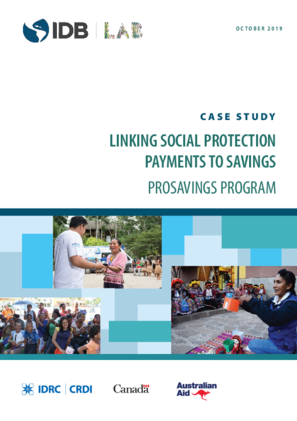Linking Social Protection Payments to Savings: Prosavings Program
Date
Oct 2019
In Latin America and the Caribbean, millions of low-income women, receive small, periodic government payments, including Conditional Cash Transfers (CCTs). It has been estimated that 1 out of 4 families in the region receive some government support. For these women, many of them self-employed, or dependent on subsistence jobs, liquidity management and good financial planning, for example being able to save for a purpose, as opposing to spending the subsidies as soon as they are paid, becomes essential reduce vulnerability, and grow financially, including affording larger household and business needs.
In this case study we ask ourselves: Do women that receive CCT´s have demand for liquid and planned savings products, if adapted to their needs? And if so, how can financial institutions develop sustainable business models to scale up those products?
These are the questions that this case study wants to answer by examining the results of the ProSavings program, that provided support the design and/or adaptation of liquid and planned savings to the needs and preferences of the low-income population in 8 projects: Belize, Dominican Republic, Ecuador, El Salvador, México and Perú. As a result of these projects, more than 230,000 low income people have opened savings accounts, almost half of them for the first time.
The case study includes recommendations to develop successful business strategies to increase the number low income women savings, such as features for liquid and planned savings products, marketing and channel strategies, and financial education.
In this case study we ask ourselves: Do women that receive CCT´s have demand for liquid and planned savings products, if adapted to their needs? And if so, how can financial institutions develop sustainable business models to scale up those products?
These are the questions that this case study wants to answer by examining the results of the ProSavings program, that provided support the design and/or adaptation of liquid and planned savings to the needs and preferences of the low-income population in 8 projects: Belize, Dominican Republic, Ecuador, El Salvador, México and Perú. As a result of these projects, more than 230,000 low income people have opened savings accounts, almost half of them for the first time.
The case study includes recommendations to develop successful business strategies to increase the number low income women savings, such as features for liquid and planned savings products, marketing and channel strategies, and financial education.




